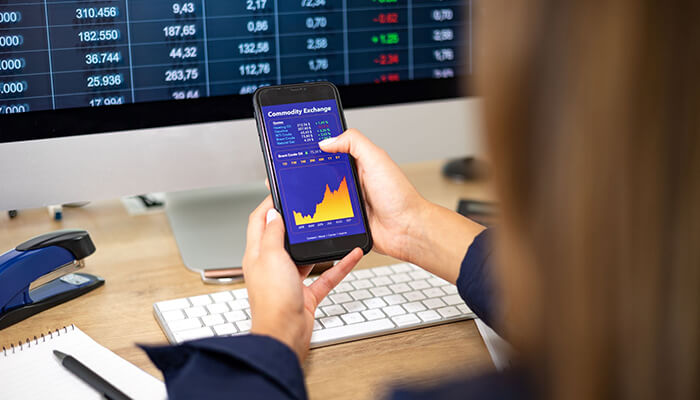In the world of contract-for-difference CFD trading, it’s worth learning the concept of leverage. This article will provide a comprehensive guide on leverage in this investment strategy. It’ll explore its benefits and risks, giving you the tools to approach your trades confidently and allowing you to magnify your trading capabilities.
As a beginner, you may first want to know what is CFD. It’s a type of financial deal capitalizing on the price change between when you start and end a trade. With CFD trading, you can guess if the prices of specific global markets will go up or down. These markets include stocks, indexes, raw materials, money from different countries, and government bonds.
Having said that, read below to unravel the mysteries of leverage in CFD trading.
1. Understanding the concept of leverage in CFD trading
Leverage is a trading mechanism that allows you to control a larger position in the market with a relatively small amount of capital. It’s like a loan from your broker, giving you greater purchasing power.
Assume you wish to trade USD$10,000 worth of a particular stock, but you only have USD$1,000. With a leverage ratio of 10:1, you can enter this trade using just your USD$1,000. In essence, leverage amplifies your trading capacity.
2. The attractive benefits of using leverage in CFD trading
When used wisely, leverage offers several enticing benefits in CFD trading, the first being maximized profits. Consider your USD$1,000 trade from earlier and imagine that the stock’s price rises by 10%. Without leverage, your profit would be USD$100. With 10:1 leverage, however, your profit soars to USD$1,000. Essentially, leverage allows you to earn more from smaller price movements.
Next is the smaller initial investment. With leverage, you don’t need huge capital to start trading. You can open significant positions with just a fraction of the cost. Traders can often start an account with a broker for as low as USD$1,000. This financial flexibility is especially appealing to beginners with limited funds.
Finally, leverage enhances your market exposure and diversification opportunities. Instead of focusing on a single trade, you can spread your capital across various markets. This approach can help manage risk, as losses in one market may be offset by gains in another.
3. The risk factor: Understanding potential downfalls
While leverage in CFD trading can be beneficial, it’s crucial to understand its inherent risks. The same mechanism that allows you to maximize profits can also magnify losses. If the market moves against your prediction, your losses are calculated based on the trade’s full value, not just your initial investment.
In the USA, trading CFDs is illegal because it’s seen as too risky. This ban extends to brokers that offer CFD trading, even if they operate outside the USA. American citizens living abroad can trade CFDs. However, regulated American brokers can’t offer CFDs. The Security and Exchange Commission maintains this prohibition due to the high-risk nature of CFDs and isn’t planning on changing this rule soon.
Another risk is the threat of margin calls. When trading on margin, your broker may require you to deposit more money into your account if your trade is not performing well. If you can’t meet the margin call, your broker might close your position, resulting in a loss.
Lastly, it’s possible to end up in debt. If your losses exceed the amount in your trading account, you owe the deficit to your broker.
That’s why many countries restrict leverage to specific maximum ratios. For instance, in Australia, the limits are 2:1 for crypto assets, 5:1 for shares or other assets, 10:1 for other commodities or minor stock indexes, 20:1 for minor currency pairs, gold, or major stock indexes, and 30:1 for major currency pairs.
In short, leverage is a powerful tool that must be used with caution and understanding.
4. Balancing the scale: Weighing the risks against the benefits
In CFD trading, balancing the scales between the attractive benefits and inherent risks of leverage is critical. While the possibility of greater profits might draw you in, you can’t overlook the potential losses. Understanding this delicate balance can distinguish between successful trading and significant financial setbacks.
Implementing risk management strategies can help you maneuver through these risks. One such technique is setting stop-loss orders. This allows you to specify the maximum amount you’re willing to lose on a trade.
Another strategy is using limit orders, which enable you to set a specific price at which your trade will close when the market moves in your favor.
Lastly, diversifying your portfolio across different assets can help spread risk. Instead of putting all your eggs in one basket, diversification ensures that potential losses in one trade can be offset by gains in another.
5. Why educating yourself is vital in leveraged CFD trading
Education is your key to unlocking the benefits of leveraged CFD trading while mitigating its risks. Understanding how markets work, staying updated with economic news, and comprehending trading strategies can help you make more informed decisions.
There are numerous resources available to help you expand your knowledge. You can turn to books written by successful traders and financial experts.
Online courses and webinars offer another avenue for learning. They cover a range of topics, from the basics of CFD trading to advanced strategies. Additionally, seeking mentorship from experienced traders can provide you with practical guidance and firsthand insights.
Conclusion
Leverage in CFD trading is a powerful tool. It offers enticing benefits like maximized profits, reduced initial investment, and increased market exposure. But remember, it can also amplify losses and potentially lead to debt.
Here’s some parting advice: seek professional guidance before diving in. Practice using demo accounts to familiarize yourself with leverage’s working mechanism. Never stop learning about CFD trading, market trends, and risk management strategies.



